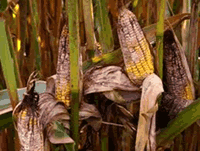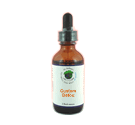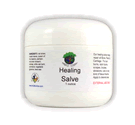 Arthropod/Vector
Bacteria
Chemicals
Fungus /Mold
/ Yeast Metals Parasites Virus Other Arthropod/Vector
Bacteria
Chemicals
Fungus /Mold
/ Yeast Metals Parasites Virus Other
|
Mycotoxins
Mycotoxins are nearly all cytotoxic, disrupting various cellular structures such as membranes, and interfering with vital cellular processes such as protein, RNA and DNA synthesis. Of course they are also toxic to the cells of higher plants and animals, including humans. Mycotoxins can appear in the food chain as a result of fungal infection of crops, either by being eaten directly by humans or by being used as livestock feed. Mycotoxins greatly resist decomposition or being broken down in digestion, so they remain in the food chain in meat and dairy products. Even temperature treatments, such as cooking and freezing, do not destroy mycotoxins. It has been suggested that mycotoxins in stored animal feed are the cause of apparent sex change in hens. Most common Mycotoxins Aflatoxins are a type of mycotoxin produced by Aspergillus species of fungi. Aflatoxin B1, the most toxic, is a potent carcinogen and has been directly correlated to adverse health effects, such as liver cancer, in many animal species. Aflatoxins are largely associated with commodities produced in the tropics and subtropics, such as cotton, peanuts, spices, pistachios and maize. Ochratoxin is a mycotoxin produced by Penicillium and Aspergillus species. It is found as a contaminant of a wide range of commodities including beverages such as beer and wine. Aspergillus is the main species found on vine fruit, which releases its toxin during the juice making process. OTA has been labeled as a carcinogen and a nephrotoxin, and has been linked to tumors in the human urinary tract. Citrinin is a mycotoxin produced by Penicillium and several species of Aspergillus. Some of these species are used in the production of foods such as cheese, sake, miso, and soy sauce. Citrinin is associated with yellow rice disease in Japan and acts as a nephrotoxin in all animal species tested. It is associated with many human foods (wheat, rice, corn, barley, oats, rye, and food colored with Monascus pigment). Citrinin can also act synergistically with Ochratoxin A to depress RNA synthesis in murine kidneys. Ergot Alkaloids are compounds produced as a toxic mixture of alkaloids in the Claviceps species of fungi, which are common pathogens of various grass species. The ingestion of ergot sclerotia from infected cereals, commonly in the form of bread produced from contaminated flour, cause ergotism (the human disease historically known as St. Anthony's Fire). There are two forms of ergotism gangrenous affecting blood supply to extremities and also affect the central nervous system. Modern methods of grain cleaning have significantly reduced ergotism as a human disease, but it is still an important veterinarian problem. Patulin is a toxin produced by the Aspergillus, Penicillium, and Paecilomyces fungal species. Penicillium is associated with a range of moldy fruits and vegetables, especially in rotting apples and figs. It is destroyed by the fermentation process and therefore, not found in apple beverages like cider. Although patulin has not been shown to be carcinogenic, it has been reported to damage the immune system in animals. Fusarium toxins are produced by over 50 species of Fusarium fingi and have a history of infecting the grain of developing cereals such as wheat and maize. The mycotoxins they include are: the fumonisins, which affect the nervous systems of horses and may cause cancer in rodents; the trichothecenes, which are strongly associated with chronic and fatal toxic effects in animals and humans; and zearalenone, which has not been found to have fatal toxic effects in animals or humans. Some of the other major types of Fusarium toxins include: beauvercin and enniatins, butenolide, equisetin, and fusarins (all included in this Detox Remedy). Results of mycotoxin exposure to multiple molds indoors may include:
|
|



